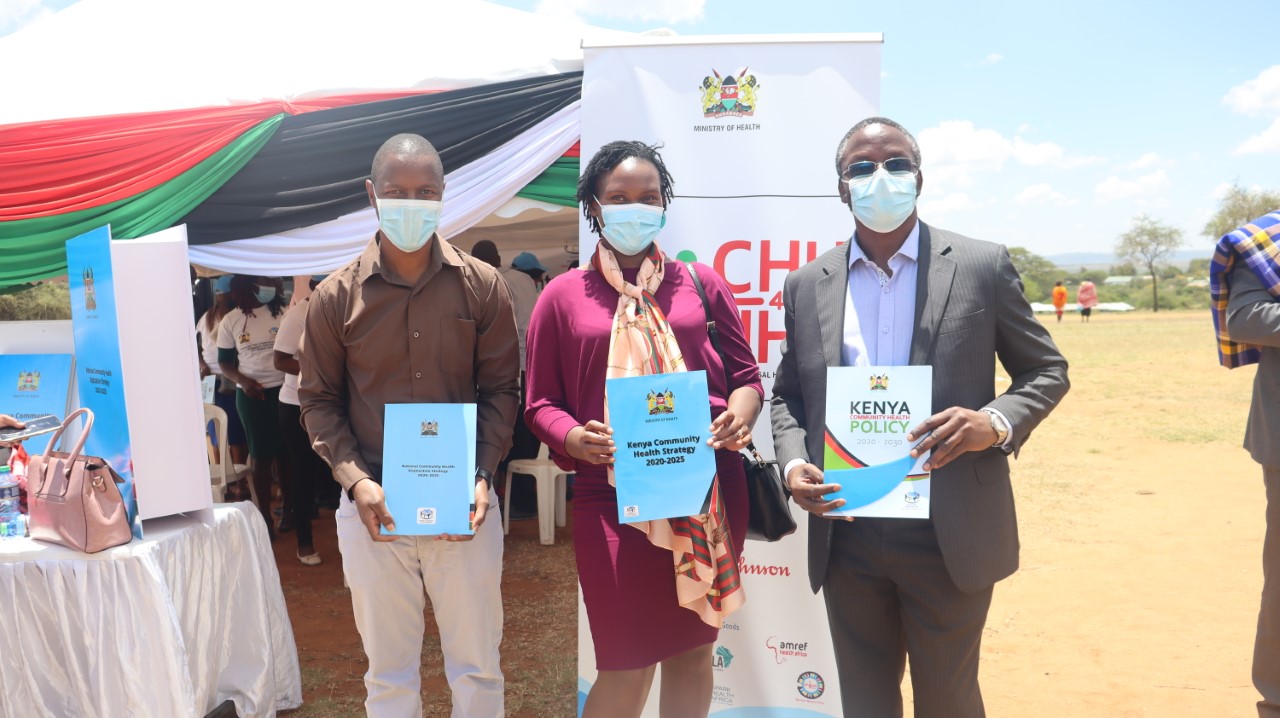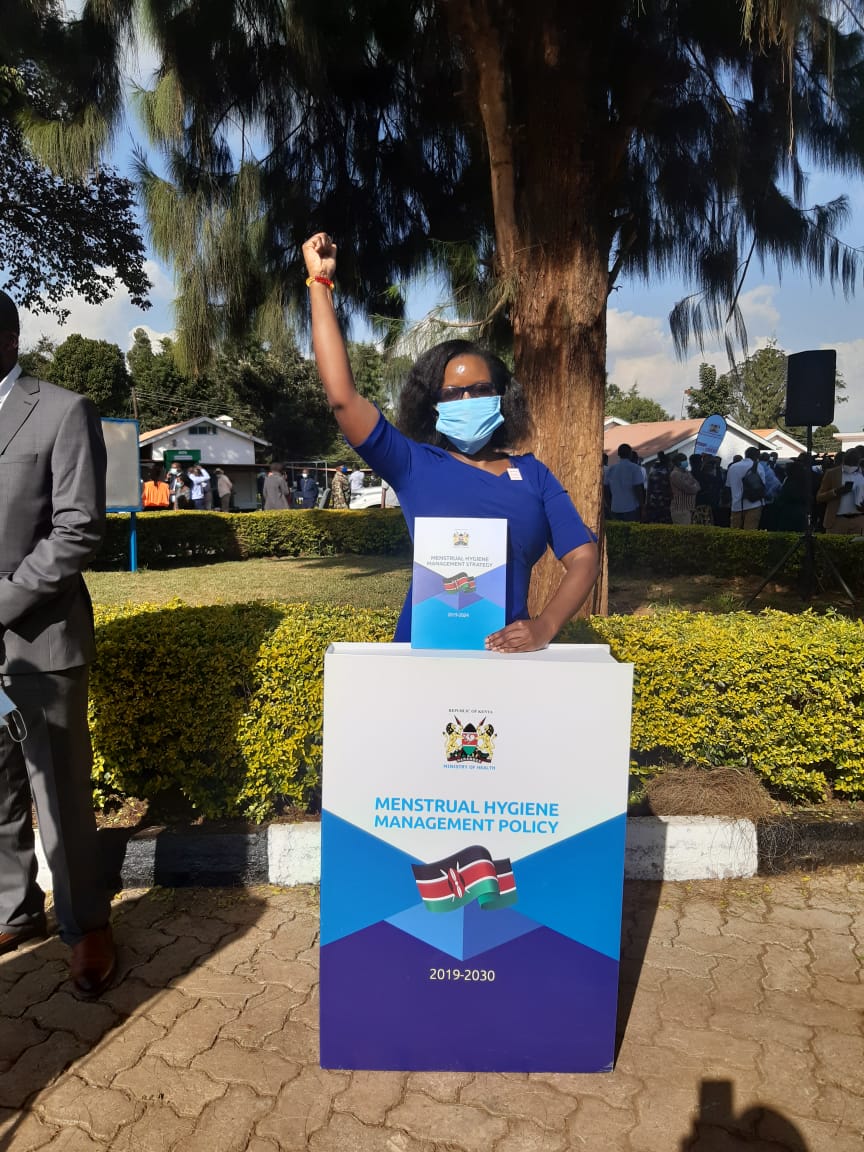Let Me Tell You a Story about Water
Thursday, 21 March, 2019

By Arthur Mwai, Project Assistant, Child Focused Development Project Kilifi
Tell me a story about a place across a bridge where the river with many names snakes its way into the Indian Ocean.
A place so hot and humid that it leaves you feeling parched with thirst to a point of delirium.
Under the merciless sun and noon day heat, no creature dares make any unnecessary movement. Listless and panting. Goats and cows jostle under the shade of a handful branches of scrawny trees.
About three kilometres off the Malindi-Lamu highway is Bandacho village. Windswept fields of sandy soil; mean and unyielding land that fights back the villagers attempts to farm it. The maize harvest is always disappointing. Mud-walled houses with thatched roofs dot the landscape.
It is in this unforgiving place that Amref Health Africa has a project school – Bandacho Primary School.

How it used to be – the last mud-walled classroom block at Bandacho
A Story of Injustice
About one kilometre away from the school is a former quarry site. Some contractor stumbled on fresh water while excavating murram for a road project. Treacherous footpaths snake their way to two open shallow wells where under a shade, water jerry cans are lined up waiting to be filled.
“Sometimes we leave at night due to the long queues during the day. This is the only free source of fresh water,” a villager shares.
Fetching fresh water is a full-time job for most women, sometimes with a ‘night shift’ thrown into the ugly bargain.
We arrive at the school during lunch hour to inspect a newly completed Amref-sponsored classroom block. The government-sponsored school lunch program is on and kids walk around with bowls, some full of rice and beans, some empty.
A Melee of Cups, Bowls and Shouts
A long queue has been building up under a tree where a lanky boy is being mobbed by pupils jostling with their bowls.
“Me please! Over here! Me! Me!” It is quite a scene. The lanky boy tries to do his very best.
But what is really happening here? I move for a closer inspection.
Water rationing after lunch – every pupil gets just 1 cup of about 150 ml fresh water.
Water is being rationed. My heart just sinks; it is a heart-breaking sight. I had finished a 500ml bottle of water in the morning heat with some more in the project vehicle.
These kids have to do with a maximum of 300ml of water for a WHOLE day.
“But why do you have to ration water?” I ask as I pull the head teacher aside.
“We have to. The school budget is not sufficient to buy enough water for the school. A 10,000-litre water bowser costs us about 4,000 Kenyan shillings. If we do not ration, the water will only last two days. We have to make it last for at least a week,” she replies with a sad look.
The Water Barons
Magarini sub-county is a strange place. Stuck in another century with high illiteracy rates and grinding poverty – one of the worst poverty rates in the country.
Since the earth came to be, the stretch along the highway, up along the salt belt where adults and child labourers work in the salt mines for a pittance; where truck drivers waiting to ferry salt lure school girls to prostitution with a few pennies or a packet of maize flour, no piped water supply has ever been functional.
“I could not live within Marereni Village. The water was simply too expensive and basic household hygiene was stressful for a mother like me,” a Marereni contact teacher once shared.

The water barons: A bowser fills up its tank at a borehole in Mjanaheri.
Magarini schools buy their water from water barons on a cash only basis. No credit.
Last year, the government laid down a major pipeline that might solve this exploitation once and for all. But this project could take another couple of years before it becomes operational. In the meantime, what happens?
Leaving No One Behind
In the quest to promote lasting health change, Amref Health Africa has been diligently working with such marginalised communities in hard-to-reach places like Magarini.
Where hope should have died, Amref keeps the embers glowing. Where thirsty children fantasize about a drink of fresh water – something so basic, we just do not stand by and watch them suffer.
Bandacho Primary has been fortunate to have three 16,000-litre water harvesting systems sponsored by Amref. The region does not receive much rain but when the school buys water, they have a safe and clean place to store it. And when it rains, they have access to substantial storage for 48,000 litres of water.

No water drop left behind – a cooking pot is used to harvest rainwater in a Magarini project school.
There are also plans by Amref to drill a borehole at the school that will also be a huge relief to villagers in their quest to access clean and safe fresh drinking water – something so basic, yet so scarce and difficult to acquire for the Bandacho community. This is just one story of one project site where Amref has made an impact. There are many other heart-warming stories to tell. Stories for another day.
This Is Us
If not us, then who? If not now, then when?
This World Water Day, we can stand tall knowing that we do our very best to leave no one behind. Yes, we can be bold enough to say that we have been doing this for many decades.
This is us. This is Amref Health Africa.
Amref Health Africa teams up with African communities to create lasting health change.





Comments